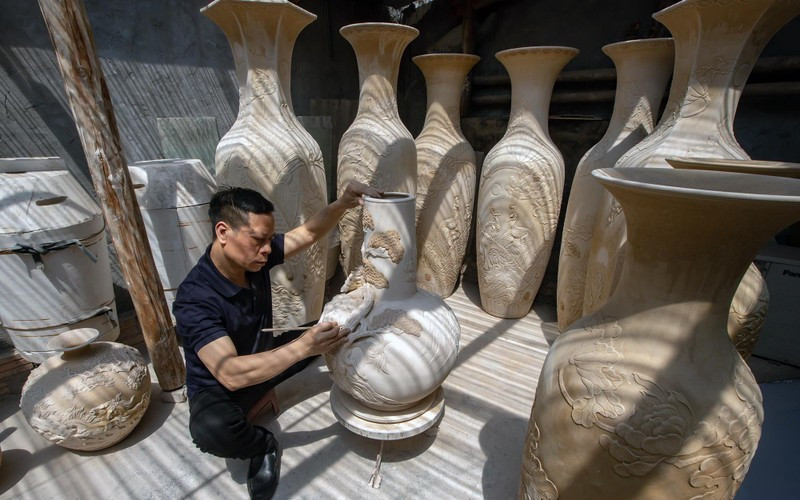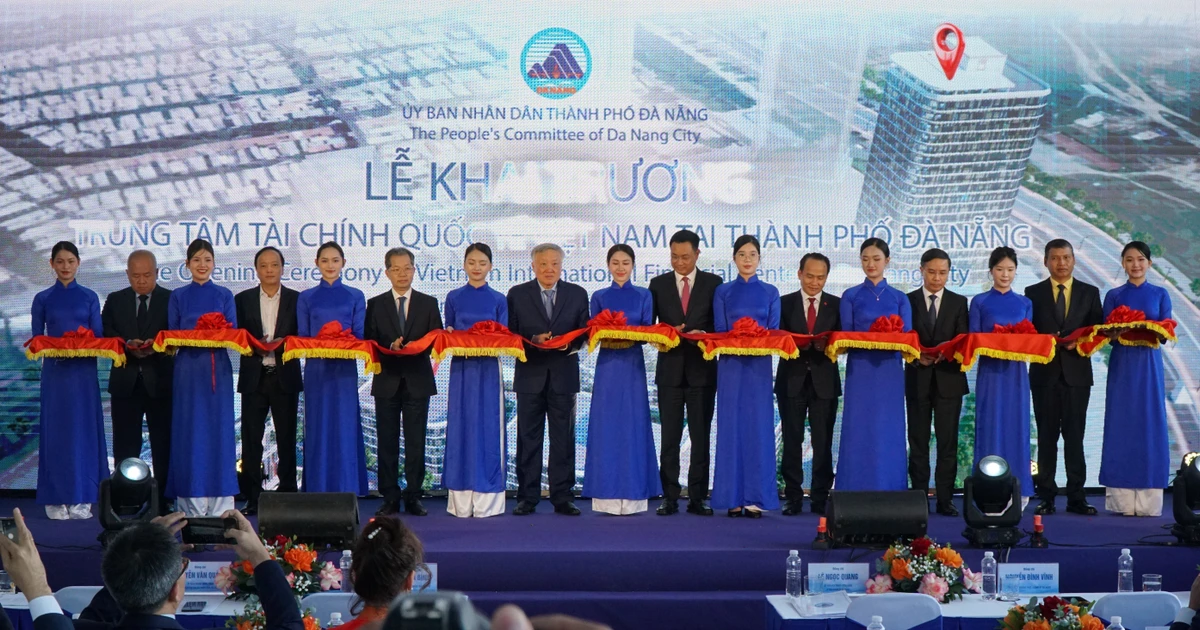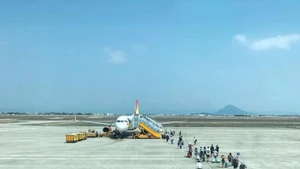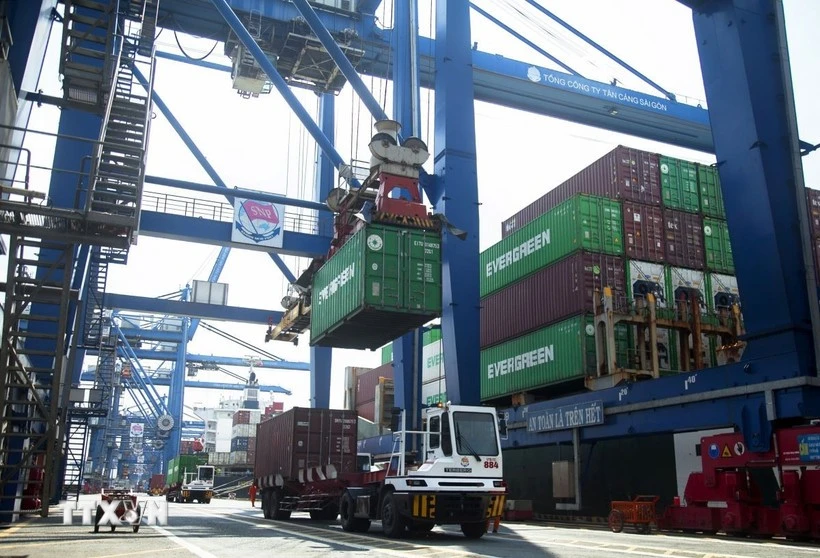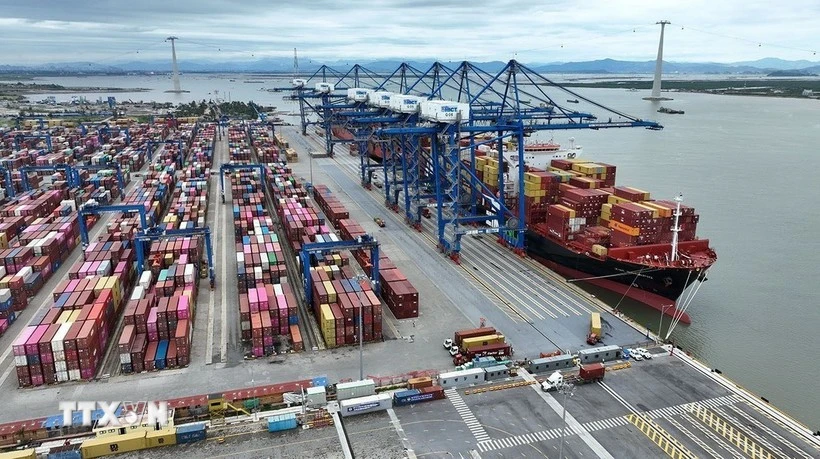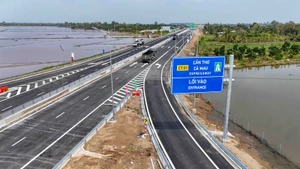Planning and development of material areas
As a province in the South Central Coast region, natural forests in Quang Nam province have been assessed by many world organisations as a rich natural resource, with high value in terms of biodiversity, environment and economics.
Every year, Quang Nam's forests provide about 1.5 million m³ of wood for domestic consumption and processing for export. Among them, rattan is identified as a tree of high economic value with 20 species, producing large and valuable yields, such as water rattan, bitter rattan, sticky rattan, mute rattan, and receding rattan, contributing to forestry processing. Production and export reached about 1.433 trillion VND, accounting for 10.46% of the total production value of the province; contributing to creating many jobs for people, and accelerating poverty eradication in mountainous areas.
Although the potential for rattan raw materials, as well as other timber forest trees in Quang Nam, is very large, the development of local raw material areas is facing many barriers and difficulties due to a lack of planning in development and management. Lack of knowledge and techniques in exploitation and processing leads to low efficiency and unsustainability. At present, Quang Nam's rattan and bamboo, are only sold in raw material form so their value is low.
Similarly, this situation also occurs in many localities, including Hoa Binh Province. Planning raw material areas and organizing chain-linked production in this locality is also becoming a difficult problem. According to the Department of Agriculture and Rural Development, by the end of 2022, Hoa Binh Province currently has 17,704.88 hectares of bamboo plantations, of which the majority is planted forest area, mainly distributed in Da Bac District (7,283.84 hectares) and Mai Chau (5,235.81 hectares).
According to leaders of the Department of Agriculture and Rural Development, the above areas were planted in the 1980s and have been exploited for many years, but the planting and care have not focused on intensive farming measures, leading to a decrease in yield and quality (tree diameter and bamboo shoot rate decreased by 20%). Therefore, Hoa Binh’s bamboo does not meet the standards for industrial production (the bamboo must be at least 8 cm in diameter, 8 m long, 3 years old or older), leading to a lower selling price than that of Thanh Hoa Province, from 8 to 10% and makes the exploitation and sale of raw materials to the market limited.
Vice Chairman of the Vietnam Handicraft Export Association Le Ba Ngoc said that currently, the country does not have a specific plan for raw material areas to ensure sustainable production for the handicraft industry, despite steps being taken. At first, raw material areas were spontaneously formed, for example, bamboo material areas in Thanh Hoa and Nghe An; sedge material areas in Thanh Hoa and Tra Vinh; rattan material areas in Quang Nam and Quang Ngai.
Many businesses want to organise the development of raw material areas, but there are still many difficulties related to finding land sources to stabilise long-term production or finding suitable cooperative relationships. Forestry companies or households are the owners of forestry land. Importing rattan and bamboo materials will become more and more difficult due to countries' policies on tightening the export of raw materials. Therefore, there needs to be a specific planning solution for rattan and bamboo material areas in the country.
Promoting chain links
According to the Director of the Department of Economic Cooperation and Rural Development Le Duc Thinh, the whole country currently has about 600 wicker craft villages using mainly bamboo, rattan, rattan, and rush materials, in a context where there are about 1 .5 million hectares of bamboo with about 9.5 billion trees. On average, each year, the country exploits 500 to 600 million trees, while the consumption demand is more than 900 million trees. Therefore, many businesses and craft villages producing rattan and bamboo products have to import raw materials from China, Laos, and Cambodia.
The rattan material area has an area mixed with wood of about 382,000 hectares, with an output of about 30 to 40 thousand tons/year, while the demand for use is about 80 thousand tons. In addition, the whole country also has about 118 craft villages and 5,580 enterprises producing, trading, and processing wood and forest products. Domestic timber output has only reached 18.6 million m³. Every year, craft villages still have to import about 5 to 6 million m³ of round wood from Laos, South Africa and Russia.
The above data not only shows that the demand for domestically produced raw materials is currently very large, but also poses the problem of competition in quality and price of domestic raw materials, with imported raw materials for domestic suppliers.
Quang Ngai Province, Tay Giang, Nam Giang, Dong Giang and Phuoc Son districts are promoting rattan exploitation. It is estimated that there are about 800 rattan exploiters, and 1,500 people participating in the rattan production process in Nui Thanh, Thang Binh, Duy Xuyen, Dai Loc and Dien Ban districts, to provide raw materials to the market. Currently, Quang Nam also has eight cooperatives and 12 companies operating in the bamboo and rattan chain, including 13 units and cooperatives producing handicrafts and seven companies specializing in raw material processing. However, product marketing and market connection strategies have not been implemented synchronously and effectively.
To overcome difficulties in raw materials for craft villages, in recent times, Quang Nam Province has had many guidelines and policies on forest protection and development, to protect and promote natural resources, associated with the protection and development of forests, development of livelihoods in ethnic minority and mountainous areas.
From Resolution No.15-NQ/TU, dated October 14, 2021, of the Quang Nam Provincial Party Committee on strengthening forest management, protection and development in the province for the 2021-2025 period, with an orientation to 2030, the province has established a project for sustainable forest management, protection and development during the 2022-2025 period, with a vision to 2030, with the goal of building Quang Nam as a national rattan material and sustainable rattan processing area.
By 2030, the rattan raw material area will be about 463,357 hectares, followed by the formation of rattan processing facilities and craft villages producing rattan handicrafts qualified for export to world markets.
Realising that the locality still has a lot of room for development, but has not received proper attention, Hoa Binh province is also making efforts to develop planning for raw material areas and policies to support cooperatives and businesses. According to Vice Chairman of Hoa Binh Provincial People's Committee Dinh Cong Su, the building of sustainable management and production and exploitation models of bamboo and bamboo is being thoroughly implemented by the province; in particular, research and development of new bamboo varieties to have seedlings to develop large raw material areas is given importance.
The province also determined to build technical demonstration models of intensive bamboo farming and high-yield bamboo cultivation and organize transfer to people; at the same time, research mechanisms and policies to support the construction of infrastructure systems, silvicultural roads, and transportation roads, to improve the efficiency of bamboo and bamboo exploitation in the province, contributing to reducing transportation costs, thereby reducing product costs to create competitiveness in the market.
Improving the quality of raw materials, planning planting areas, and creating chain links in production, are becoming new directions in localities. In particular, chain links between craft villages across the country, to create good output for raw material areas, are also being formed. These are specific and necessary steps to continue to affirm that craft villages are a spearhead in rural economic development.
